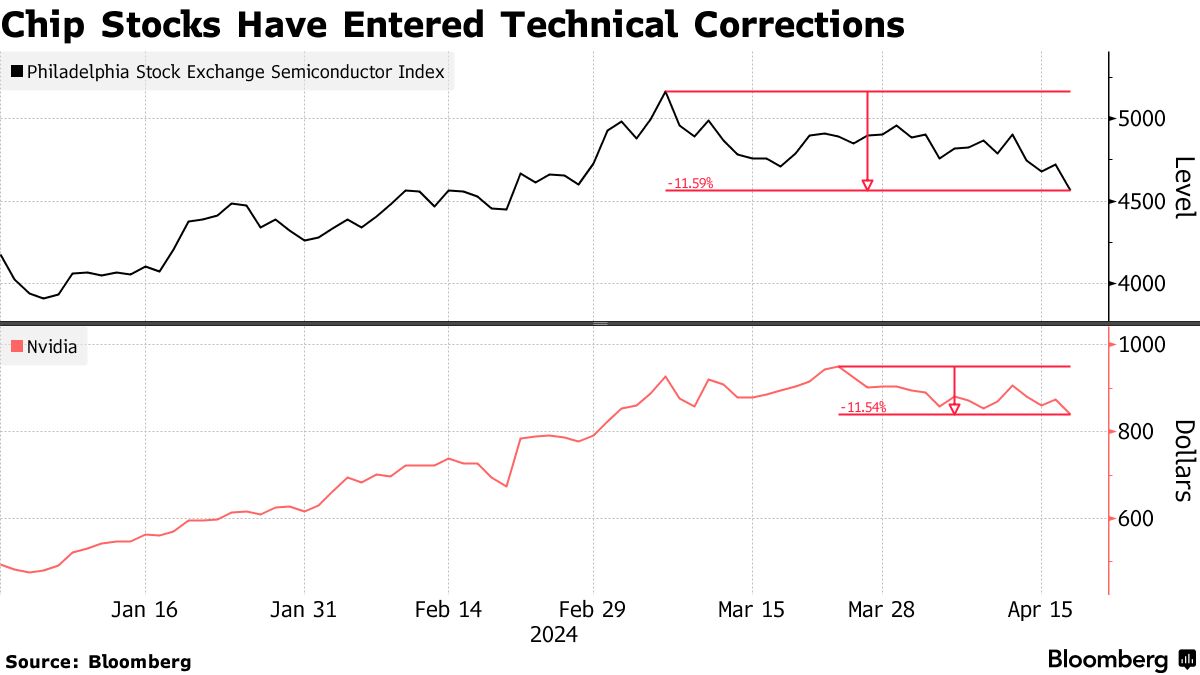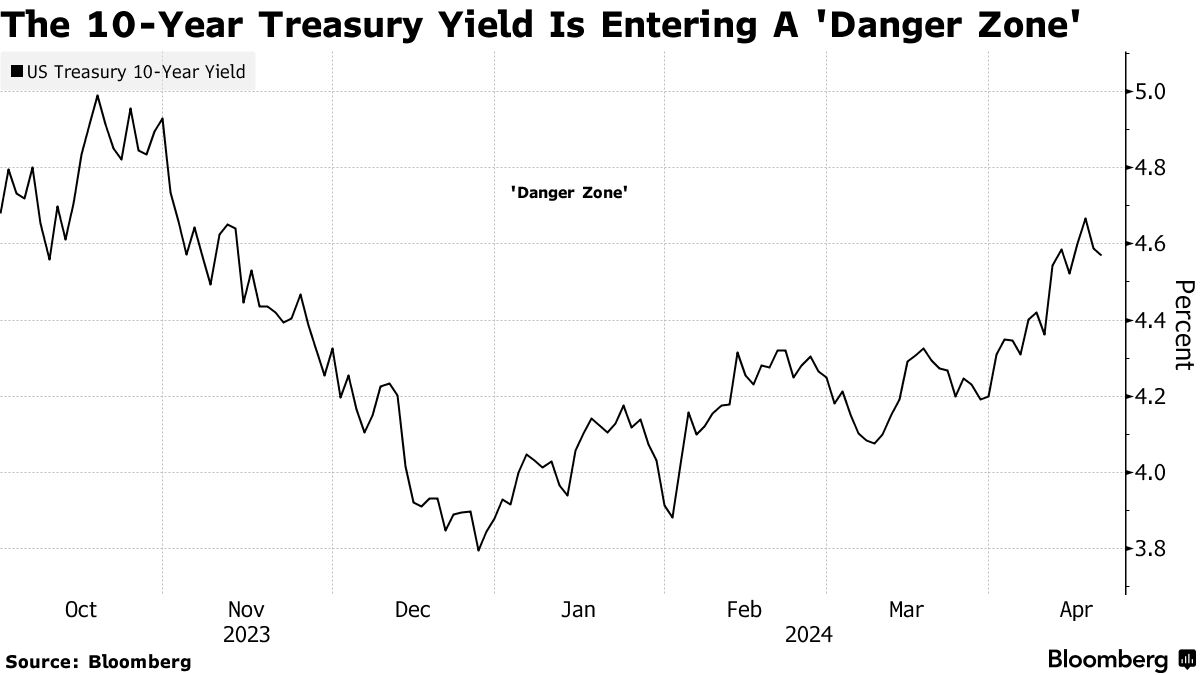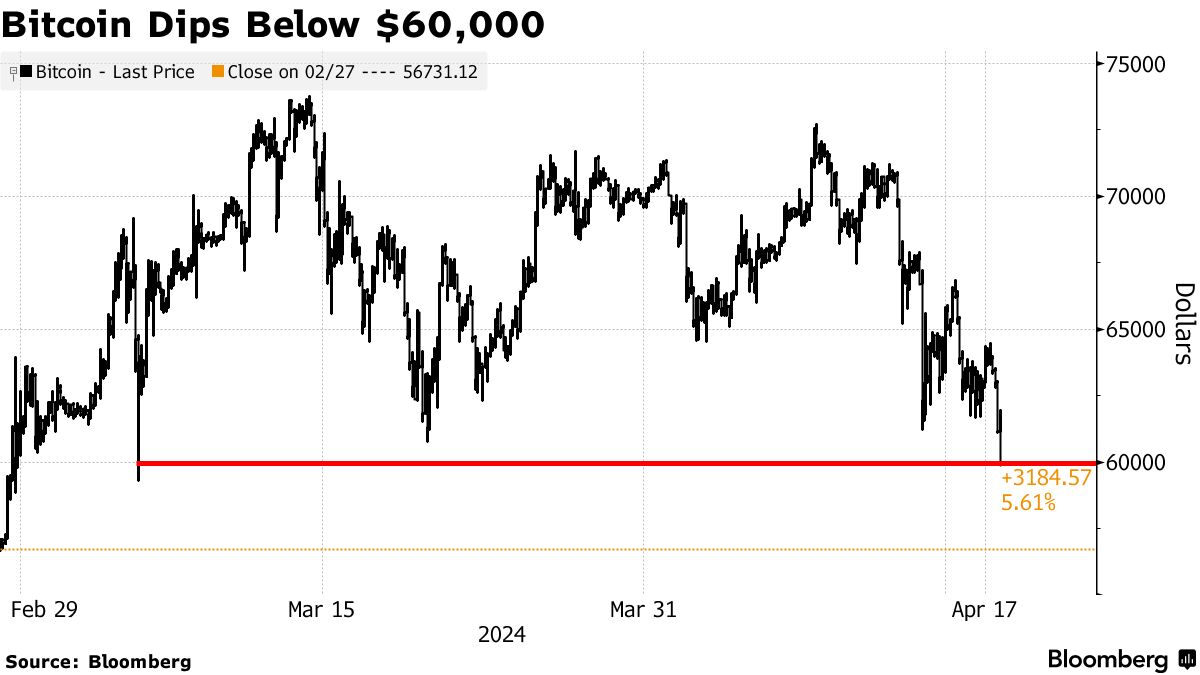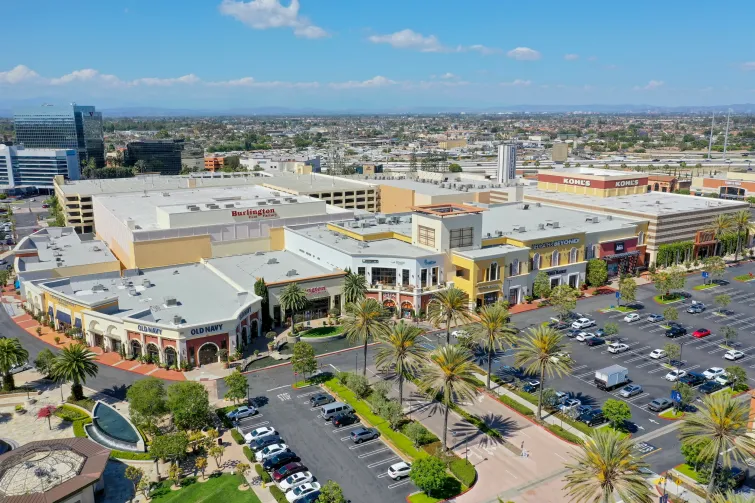—— Blackstone Profit Narrowly Beats Forecast; Semiconductor Index Enters Correction Zone; US Treasury Has Dangerous Selloff Risk; US Unemployment Claims Stabilizes; Cocoa Price Hits Record High; Bitcoin Briefly Dips Below $60k; Orange County Mall Listed for $300M
1. Blackstone Profit Narrowly Beats Forecast
Blackstone Inc. generated higher fees from prominent retail funds and credit strategies in the initial quarter, offsetting the slower pace of concluding deals. The company disclosed that distributable earnings rose by 1% compared to the previous year, reaching $1.27 billion, or 98 cents per share, according to a statement released Thursday. This exceeded the average estimate of analysts surveyed by Bloomberg by 2 cents.
The deceleration in deal closures within the private equity and real estate sectors affected the profitability available to shareholders as the period progressed. Potential buyers remained cautious due to increased borrowing costs caused by higher interest rates.
Investment banks are eagerly observing any indications of a thaw in the dealmaking environment, as investors eagerly anticipate firms returning cash. Blackstone President Jon Gray remarked in an interview that markets need further recovery before deal closures regain momentum.
With assets under management growing by 7.1% to $1.06 trillion compared to the previous year, Blackstone is a key indicator of financial market health. Renowned as a major player in buyouts and the largest owner of commercial real estate globally, Blackstone is increasingly diversifying its investments to include insurance companies and individual investors.
______
2. Semiconductor Index Enters Correction Zone
A measure tracking global chip stocks and the prominent AI company Nvidia Corp. have both descended into a technical correction, signaling a slowdown in the primary engine of the global equity market’s momentum over the last eighteen months.
On Wednesday, both the Philadelphia Semiconductor Index and Nvidia experienced declines exceeding 3%, resulting in drops of over 10% from their peak levels reached in March.
Apart from worries about potentially overheated market rallies, the sector has been impacted by apprehensions regarding postponed Federal Reserve interest rate reductions and the sluggish state of China’s economy.
TSMC’s American depositary receipts have declined by 6.8% from their record high in March. Advanced Micro Devices Inc. and Intel Corp. have been the primary contributors to the SOX’s descent into correction, with both companies experiencing drops exceeding 20% since the gauge reached its peak on March 7th.
______
3. US Treasury Has Dangerous Selloff Risk
The Treasury market is approaching precarious levels that could trigger a substantial selloff, potentially driving yields on 10-year bonds back up to 5%, warns Vanguard.
“We are currently in a risky territory,” stated Ales Koutny, head of international rates at Vanguard, in an interview. He emphasized that even a slight upward movement—beyond the critical threshold of 4.75%—could prompt investors to abandon their expectations of a market rally, leading to a cascade of selling that might elevate yields to levels reminiscent of the highs observed in 2007.
Late last year, investors had heavily invested in Treasuries, anticipating an aggressive easing cycle from the Federal Reserve. However, with recent data indicating sustained strength in the US economy, sentiment in the market has shifted unfavorably.
Koutny noted that many investors are compelled to sell off their holdings to mitigate losses. He is responsible for managing Vanguard’s $1.7 trillion in active assets.
______
4. US Unemployment Claims Stabilizes
New applications for US unemployment benefits stayed low last week, indicating a stable job market.
According to data from the Labor Department released on Thursday, initial claims remained at 212,000 for the week ending April 13. This figure was in line with the median forecast of 215,000 in a Bloomberg survey of economists.
Continuing claims, which serve as an indicator of the number of individuals receiving unemployment benefits, also saw minimal change, standing at 1.81 million for the week ending April 6.
______
5. Cocoa Price Hits Record High
The cost of cocoa surged to unprecedented levels in London on Thursday following an industry report highlighting crop failures in West Africa during the first quarter, exacerbating the global shortage of cocoa beans for chocolate production.
Futures soared by as much as 9.6% to reach a record high of £9,477 per tonne, continuing the upward trend observed since the beginning of the year due to poor harvests in the primary cocoa-growing regions of West Africa, which have intensified the supply shortfall.
According to the European Cocoa Association, the volume of “grindings” – cocoa beans processed by the industry for eventual chocolate production – decreased by 2.5% in the first three months of this year compared to the same period last year.
______
6. Bitcoin Briefly Dips Below $60k
Bitcoin briefly dipped below $60,000 for the first time in over a month, with volatility surging ahead of an upcoming software update in the blockchain, which has long been viewed as bullish for the cryptocurrency.
The original digital asset saw a decline of up to 5%, reaching $59,888 before recovering some ground. Bitcoin has experienced a roughly 18% decrease since hitting a record high of $73,797 on March 14th. Other smaller cryptocurrencies like Ether, Solana, and Dogecoin also saw declines on Wednesday. Stocks related to the crypto market, including MicroStrategy, Coinbase, and Marathon Digital, were also down.
The drop comes ahead of a highly anticipated code update in Bitcoin scheduled for as early as Friday. This event, known as the halving, occurs approximately every four years and is typically seen as a positive catalyst for Bitcoin prices because it reduces the supply of new tokens from the blockchain. However, concerns about whether the halving is already factored into the market amidst a risk-off investment environment have fueled an extended decline.
Approximately $780 million worth of bullish cryptocurrency bets were liquidated within a span of 24 hours last Friday.
______
7. Orange County Mall Listed for $300M
The owners of a 853,000-square-foot shopping center in Southern California are seeking to sell the property, potentially marking one of the largest post-pandemic single-asset retail transactions in the United States.
PGIM Real Estate and DJM Capital are putting the Bella Terra property in Orange County, Calif., on the market, aiming for a price of around $300 million, as reported by Green Street’s Real Estate Alert. While this figure is lower than the center’s valuation nearly a decade ago, a sale at this price point would represent “one of the biggest single-asset trades of a U.S. retail property within the past four years,” according to Green Street’s database.
Bella Terra, located at 7777 Edinger Avenue in Huntington Beach, is currently 96.8% leased. Situated just off the Beach Boulevard exit from Interstate 405, the property boasts Whole Foods as its grocery anchor. Additionally, Costco operates a store and holds a ground lease at the location.
______
The content of this article comes from various financial news media such as The Wall Street Journal, Financial Times, and Bloomberg.







